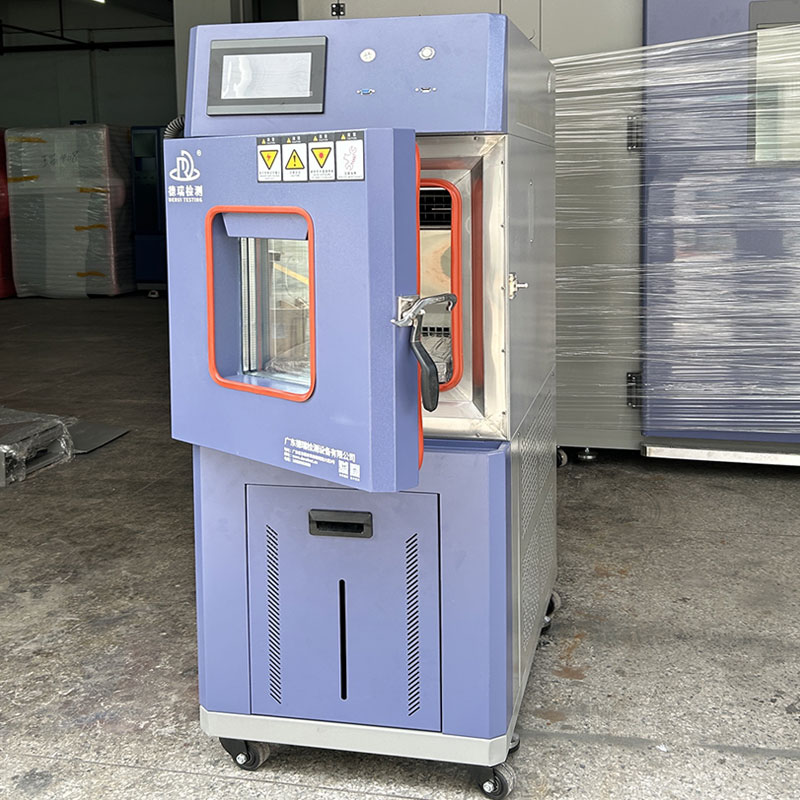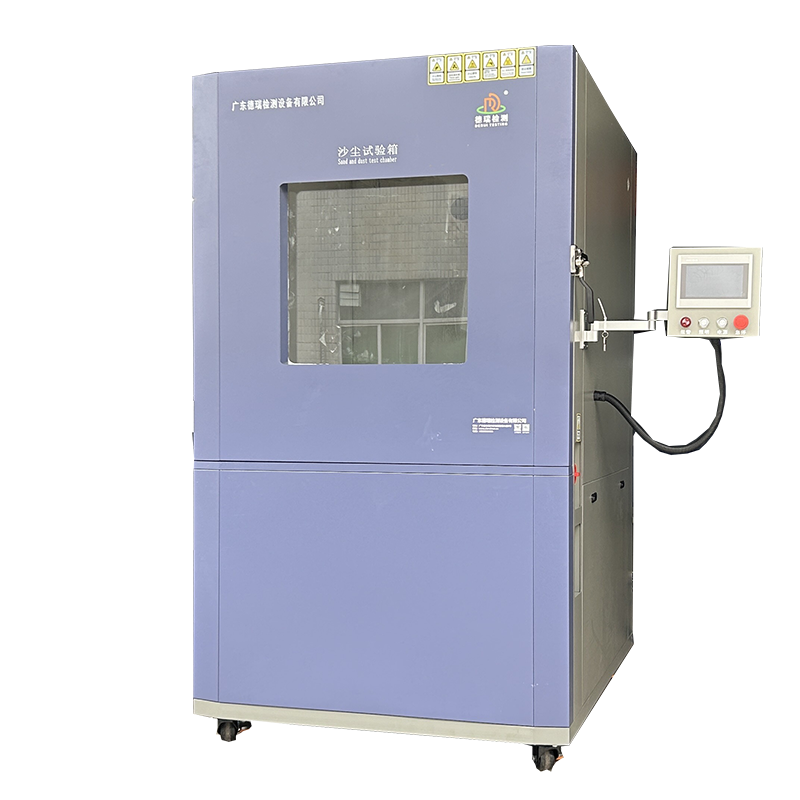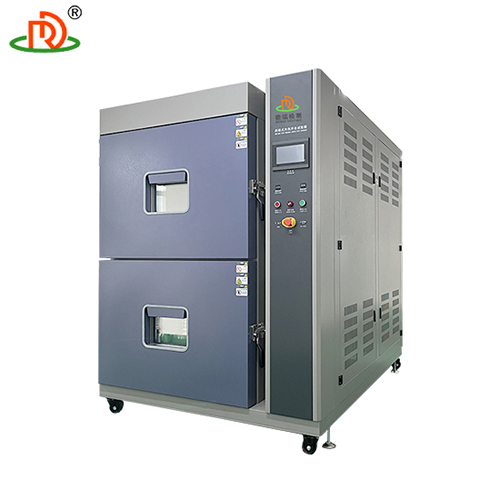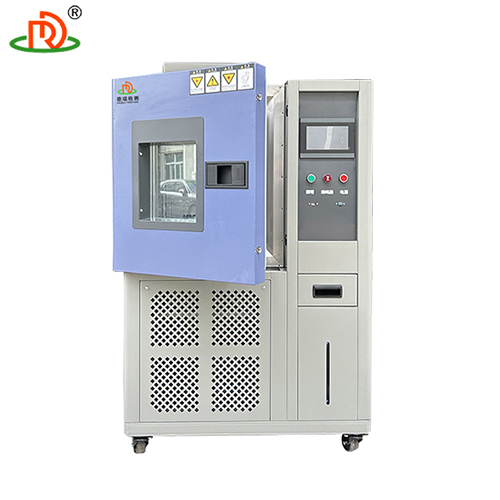
Yellow resistance test of sports equipment coating
158005.0 INR/Unit
Product Details:
X
Yellow resistance test of sports equipment coating Price And Quantity
- 158005.0 INR/Unit
- 1 Unit
Yellow resistance test of sports equipment coating Trade Information
- Cash in Advance (CID)
- 100 Unit Per Month
- 7 Days
- All India
Product Description
Item Specification
1. Internal chamber size(W*D*H) 50*50*60cm
2. External chamber size(W*D*H) 114*74*130cm
3. Temperature Range Ambient Temperature~200
4. Control Mode Automatic Calculation Controller
5. Temperature display accuracy 0.1
6. Control accuracy 3
7. Distribution accurac 1 (ambient ~ 100)
8. Time memory 0-999 hours, Power Failure Memory Type, with Buzzer
9. Sample holder rotation speed Diameter 45cm, 102 roll/min
10. UV light source 300W UV lamp
11. Heating method Hot air circulation
12. Chamber material Internal: Stainless Steel SUS304;
13. External: Steel plate with baking varnish
The Yellowing Resistance Test for Sports Equipment Coatings is a test method specifically designed to evaluate the yellowing resistance (i.e., the ability to prevent the coating from yellowing) of the surface coatings of sports equipment (e.g., fitness equipment, sports protective gear, sports shoes, bicycles, etc.) under the effects of light, high temperature, humidity and other environmental factors. Yellowing resistance is an important indicator of coating quality and service life, which directly affects the appearance and experience of sports equipment. Below is the detailed information about the yellowing resistance test for sports equipment coatings:
1. Test purpose
Evaluate the yellowing resistance:
Evaluate the color stability of sports equipment coatings during long-term use, especially under the effect of light, high temperature, humidity and other environmental factors, to prevent the coating from yellowing.
Ensure the quality of appearance:
Ensure that the sports equipment coating can still maintain a good appearance after a long period of use, to enhance the market competitiveness of the product and user satisfaction.
Extend service life:
By testing the durability of the coating under different environmental conditions, it extends the service life of the sports equipment and improves the cost-effectiveness of the product.
2. Test standards and methods
ASTM D3424:
ASTM standard test method for yellowing resistance of plastics.
ISO 4892-2:
International Organization for Standardization standard for aging test of plastics under laboratory light exposure.
ASTM D4459:
American Society for Testing and Materials standard for aging test of plastics under ultraviolet exposure.
GB/T 16422.3:
Chinese national standard on test methods for plastics exposed to laboratory light sources.
ASTM D1148:
American Society for Testing and Materials standard test method for discoloration of rubber.
ISO 105-A02:
International Organization for Standardization standard test method for color fastness of textiles.
Customized Test Methods:
According to the specific application scenarios of sports equipment and customer requirements, we develop specialized test programs, including different temperatures, light intensity, humidity conditions, and so on.
3. Test equipment
Yellowing resistance test chamber:
Equipped with high-intensity light source (e.g. UV lamp, xenon lamp, etc.) and temperature and humidity control system, capable of simulating different light, temperature and humidity conditions.
Colorimeter or Spectrophotometer:
Used to measure the color change of the coating before and after the test to evaluate its resistance to yellowing.
Environmental test chamber:
Used to simulate environmental conditions such as high temperature and high humidity for more comprehensive yellowing resistance testing.
Artificial Accelerated Aging Tester:
Accelerates the aging process of materials by simulating the conditions of light, temperature and humidity in the natural environment to assess their durability.
4. Test Steps
1.
Initial testing:
Under the standard environmental conditions, the initial inspection of the appearance, color and adhesion of the coating of sports equipment is carried out.
2.
Sample Preparation:
Prepare samples that meet the test requirements and ensure that their size and shape meet the equipment requirements.
3.
Setting parameters:
Set parameters such as light intensity, temperature, humidity, test time, etc. according to test standards or customer requirements.
4.
Start the test:
Place the sample in the yellowing test chamber, start the equipment and start the yellowing test.
5.
Continuous monitoring:
During the test, monitor the performance and status of the sample periodically and record the relevant data.
6.
End of test:
At the end of the test, the samples are removed, examined for appearance and color, and color changes are measured.
7.
Result Analysis:
Using a colorimeter or spectrophotometer, measure the color change of the coating before and after the test to evaluate its resistance to yellowing.
5. Assessment Criteria
Color change:
Using a colorimeter or spectrophotometer, measure the color change of the coating before and after the test, usually expressed in terms of E value (total color difference). the smaller the E value, the smaller the color change and the better the resistance to yellowing.
Appearance Inspection:
Check the surface of the coating for obvious color change, fading, flaking, etc.
Adhesion and abrasion resistance:
Test the adhesion and abrasion resistance of the coating after the yellowing resistance test to ensure that it will not peel off or wear off during use.
Mechanical Properties Test:
Test the mechanical properties of the coating after the yellowing resistance test, such as hardness, elasticity, etc., to evaluate its durability.
6. Application Areas
Fitness equipment:
Evaluate the yellowing resistance of coatings on fitness equipment (e.g. treadmills, exercise bikes, strength training equipment, etc.) to ensure that the coating maintains its good appearance during long-term use.
Sports Protective Gear:
Test the yellowing resistance of coatings for sports protective gear (e.g. helmets, knee pads, elbow pads, etc.) to ensure that they do not yellow or fade during use.
Athletic Shoes:
Evaluates the yellowing resistance of upper materials for sports shoes to ensure that they do not yellow during sunlight exposure and daily use.
Bicycles:
Tests the yellowing resistance of coatings on bicycle frames, wheels and other components to ensure they maintain a good appearance in outdoor environments.
Tell us about your requirement

Price:
Quantity
Select Unit
- 50
- 100
- 200
- 250
- 500
- 1000+
Additional detail
Mobile number
Email








 English
English Spanish
Spanish French
French German
German Italian
Italian Chinese (Simplified)
Chinese (Simplified) Japanese
Japanese Korean
Korean Arabic
Arabic Portuguese
Portuguese